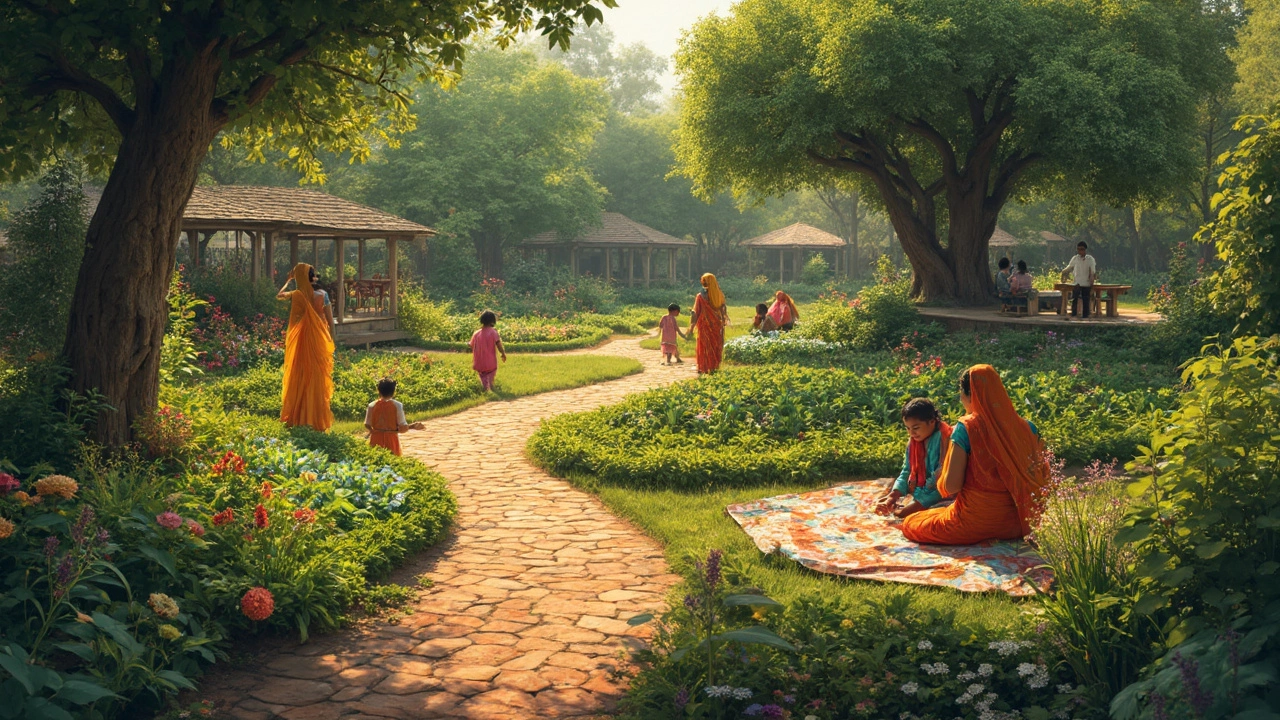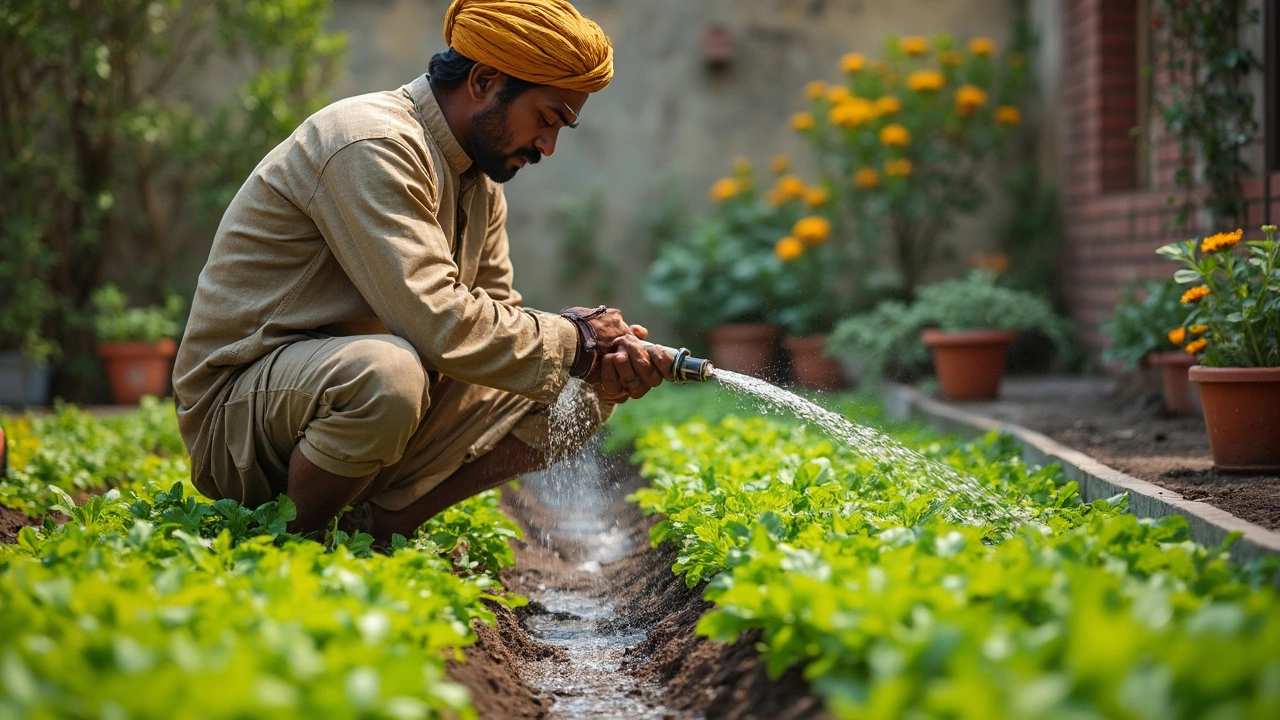Which Civilization First Invented Rice? A Journey Through Ancient Rice Cultures
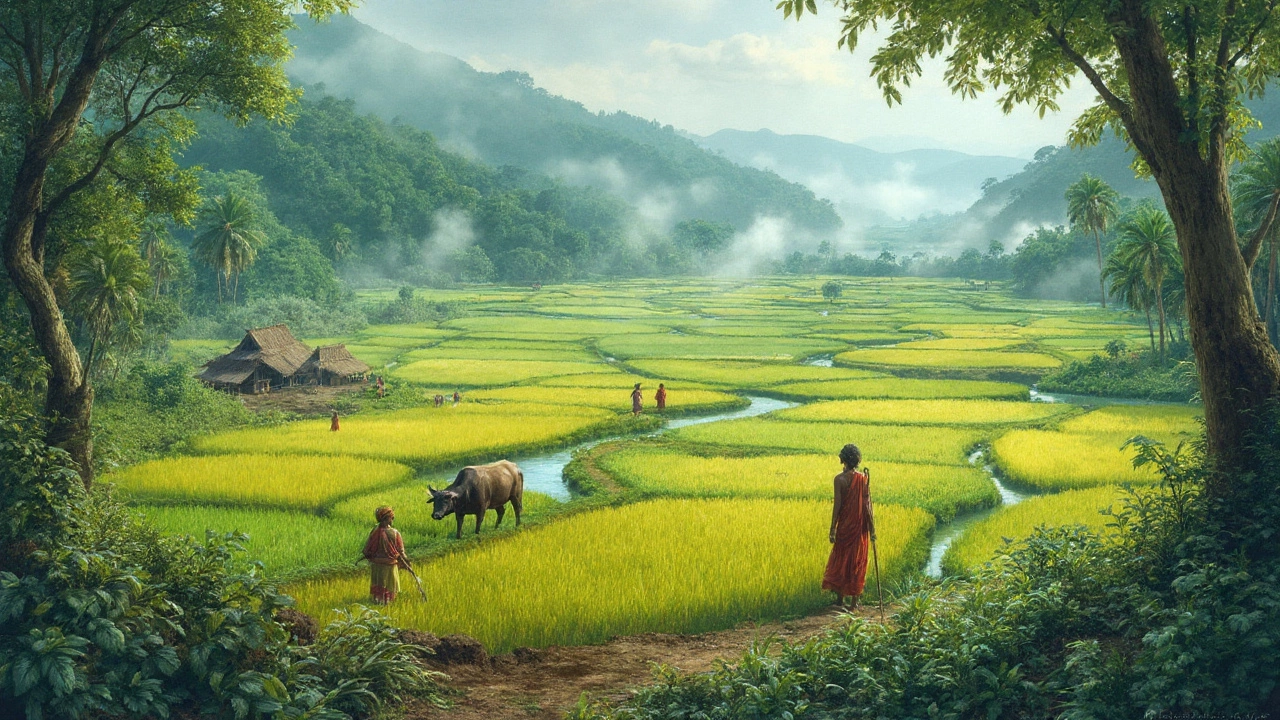
Imagine a place where food is not just about taste, but about survival itself. Every year, well over half the world’s population eats rice in some form—fried, steamed, boiled, or even puffed into tiny snacks. But have you ever stopped to wonder who actually invented rice? The answer is far more than just a single country picking some wild grass and eating the seeds. It involves thousands of years of innovation, migration, and connection across continents.
The Birthplace of Rice: Setting the Scene in Ancient Asia
If we’re tracing rice all the way back, the map lights up in ancient China. It’s not a new claim—archaeologists have identified the Yangtze River Valley as the cultural birthplace of rice cultivation. We’re not talking centuries, but millennia: the oldest grains go back about 9,400 years. That’s remarkably old. Scientists have found preserved rice husks and ancient paddies that tell a story of experimentation, selective breeding, and smart farming practices that would change the world’s diet forever.
Some major discoveries? At the site of Shangshan in the lower Yangtze basin, old rice grains dated to around 7000 BCE were found, mixed with clues about tools and early irrigation. People didn’t just sprinkle seeds and hope for the best. They shaped the landscape—making tiny levees, managing floods, and harnessing river silt. Rice was not just dinner; it was technology, politics, and culture. Each little grain represents trial and error from a people who depended on tricky monsoon seasons and unpredictable rivers for their next meal.
The Yangtze wasn’t alone, though. By around 5,000 years ago, communities along Southern China and parts of Northeastern India were also making rice a staple. The earliest varieties were what we call Oryza sativa—the ancestor of most rice you find on supermarket shelves today. Interestingly, a different species, Oryza glaberrima, was being domesticated in West Africa. But Asian rice took hold in terms of spreading and dominating trade and farming practices.
On a deeper level, why rice and not some other wild grass? Rice is handy in climates where water is more reliable than sunlight, especially in flood-prone landscapes. Early farmers could count on their harvests by intentionally flooding their fields; this drowned out weeds and pests, giving rice a clear upper hand. It also turned muddy lowlands, useless for wheat or barley, into high-yield food factories. That is why you’ll see spectacular rice terraces winding up mountainsides or flat paddies stretching under the wide Asian sky, reverberating with the history of its early inventors.
Rice Spreads Its Roots: From the Yangtze River to the Rest of the World
Once people realized how to grow rice, the idea caught on fast—and not just next door. It traveled by trade, conquest, and curiosity, quickly becoming global long before passports were a thing. As early as 1500 BCE, rice farming had jumped from China into Korea and, a few centuries later, to Japan. What’s wild here is how each new culture bent rice to its own way—Japan’s farmers, for example, created elaborate storage systems to protect their precious crop from rodents and humidity.
Moving west, ancient India became a cradle for rice innovation too, especially along the Ganges and Brahmaputra river valleys. Archaeologists digging through India’s ancient layers have found rice impressions on clay pots and grains preserved in old hearths, showing that the crop was central to diets and celebrations. Indian rice culture is a blend—some of its practices were homegrown, some borrowed from distant neighbors. The food was always at the center: biryani, dosas, idli, kheer—the variety created by hundreds of years of experiment.
Rice didn’t stop in Asia. By 1000 BCE, it had reached the Middle East via ancient routes like the Silk Road, and by the time of Alexander the Great (4th century BCE), Greeks and Egyptians were learning about this water-loving grain. Fast-forward to the Middle Ages, and you’ll find records of rice in Sicily, on Spanish tables, and later in West Africa—each new place finding ways to cook, store, and celebrate it.
The biggest leap was across the Atlantic. When European colonists landed in the Americas, they tried to replicate their food staples. Rice paddies sprouted up in Carolina marshes after 1685, planted first by enslaved Africans who brought centuries of rice-growing expertise from places like the Niger Delta. By 1726, South Carolina exported nearly 4.5 million pounds of rice each year, making it a cash crop to power colonial fortunes. Today, the US is among the world’s top 10 rice producers—thanks to both the original inventors and generations of innovators along the way.
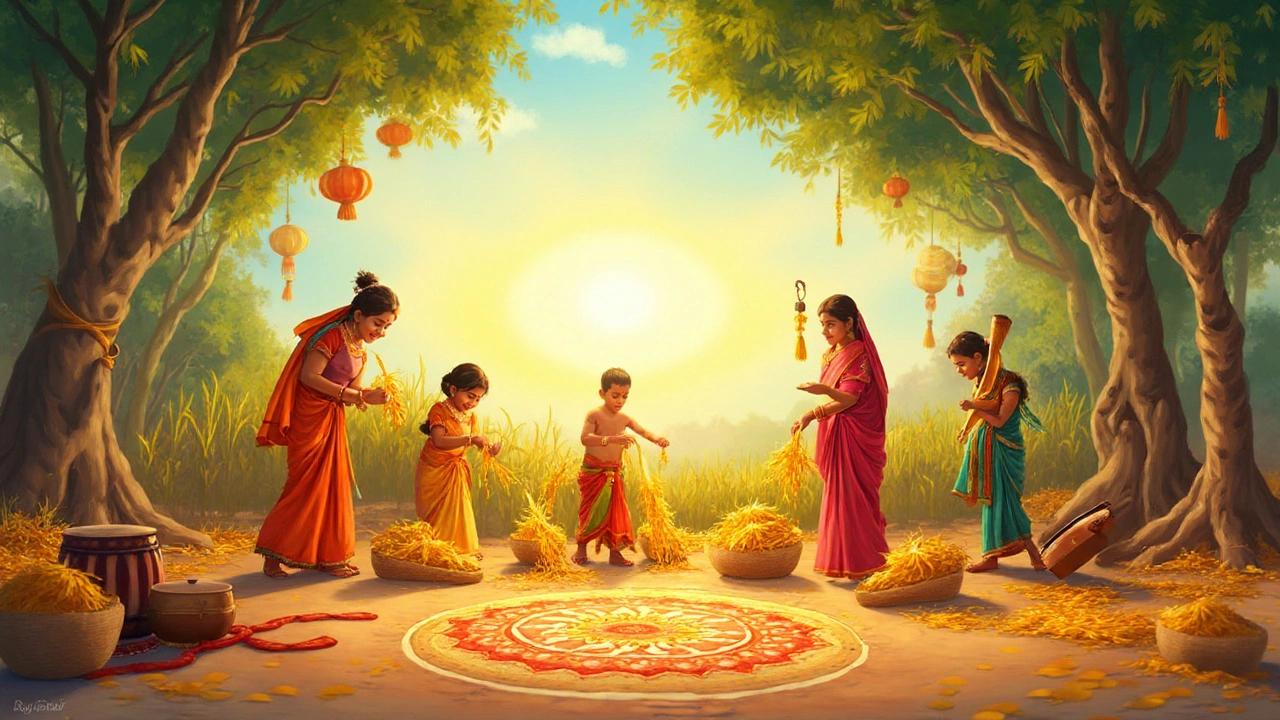
Cultural Power: How Rice Shaped Traditions, Religions, and Daily Life
Rice didn’t just feed the body—it built cultures. In China, rice is woven into everything from art to language; the word "rice" is even a synonym for "meal." Banquets in Laos and Cambodia start only when the sticky rice is served. In India, new harvests are celebrated with festivals like Pongal and Makar Sankranti, where rice-based treats take center stage. In Japan, rice holds a sacred role: Shinto rituals use rice offerings to honour the spirits, and sake—rice wine—lies at the heart of both celebration and solemn ceremony.
Look closely at weddings across Asia, and you’ll spot rice again: tossed over newlyweds as a symbol of prosperity and plenty. In the Philippines and Indonesia, rice paddies are carefully crafted artworks, winding around hills and reflecting centuries of wisdom about slopes, water, and patience. Practically, rice meant survival for millions, but emotionally, it became part of the stories people told about themselves—who they were, where they belonged, and what they wished for their children’s future.
Rice also spun its own technology. Think about the difference between steamed fluffy jasmine rice and sticky arborio used for Italian risotto, or the delicate grains of basmati in Persian pilaf. Maintaining rice health meant irrigation, but also keeping seeds pure, inventing hardy new strains to beat floods, droughts, and disease. By the 1960s, the "Green Revolution" in Asia saw the birth of high-yield, pest-resistant breeds that helped stave off famine, especially in India and China—places where a poor harvest could mean real disaster.
You can trace family stories, business networks, and even village boundaries based on rice fields. Old customs like the Japanese “taue” (rice planting festivals), Thai floating markets loaded with rice bundles, or Bangladesh’s rural fairs still revolve around planting and harvesting. Each tradition is a nod backward to ancient inventors who first figured out that with enough water, mud, and patience, these tiny white grains would always be worth the effort.
Modern Rice: Global Impact, Challenges, and Innovations
Fast forward to the present, and rice sustains lives everywhere. According to the Food and Agriculture Organization (FAO), people produce over 780 million tonnes of rice each year—Asia leads, especially China, India, Indonesia, Vietnam, Thailand, and Bangladesh. Here’s a surprising stat: In 2023, Bangladesh produced around 54 million tonnes alone, most of it eaten right at home. Honda, a carmaker, started as a rice mill business in Japan—rice money built more than meals.
You might think rice is just rice, but there are over 40,000 cultivated varieties worldwide. There’s glutinous rice for making mochi in Japan, long-grain slender types for pulao across South Asia, and short-grain starchy kinds for creamy risotto in Italy. And it’s more than just science: seed-keeping is now a precious heritage job, with organizations preserving rice’s DNA in vaults from the Philippines to California. Scientists are now breeding "climate-smart" rice that grows faster, uses less water, or resists salt—essential as weather gets weird and farmlands change shape.
But rice isn’t without its headaches. In places where it’s vital, collapsed irrigation, rising sea levels, and unpredictable weather threaten harvests. Farmers are trying out everything from alternate wetting and drying systems to solar-powered pumps and even drones for monitoring tiny paddies. On the table are discussions about methane—rice paddies release it as a greenhouse gas. The next invention could be about making rice secure and green for future generations, not just abundant.
You’ve also got savvy chefs turning ancient grains into trendy modern foods: rice noodles in London, rice milk in US coffeehouses, or hand-pressed sushi at Tokyo stations. Gluten-free fans have embraced rice pasta, and in India, puffed rice (murmura) is a street snack staple. Rice is flexible—bend it, blend it, fry it, or ferment it, there’s always a use.
The miracle is that with so many hands, traditions, and experiments behind it, rice has never gone out of style. Each little bowl, whether eaten at a posh dinner in Birmingham or from a roadside stall in Bangkok, carries a piece of that ancient invention—and a future still being written.
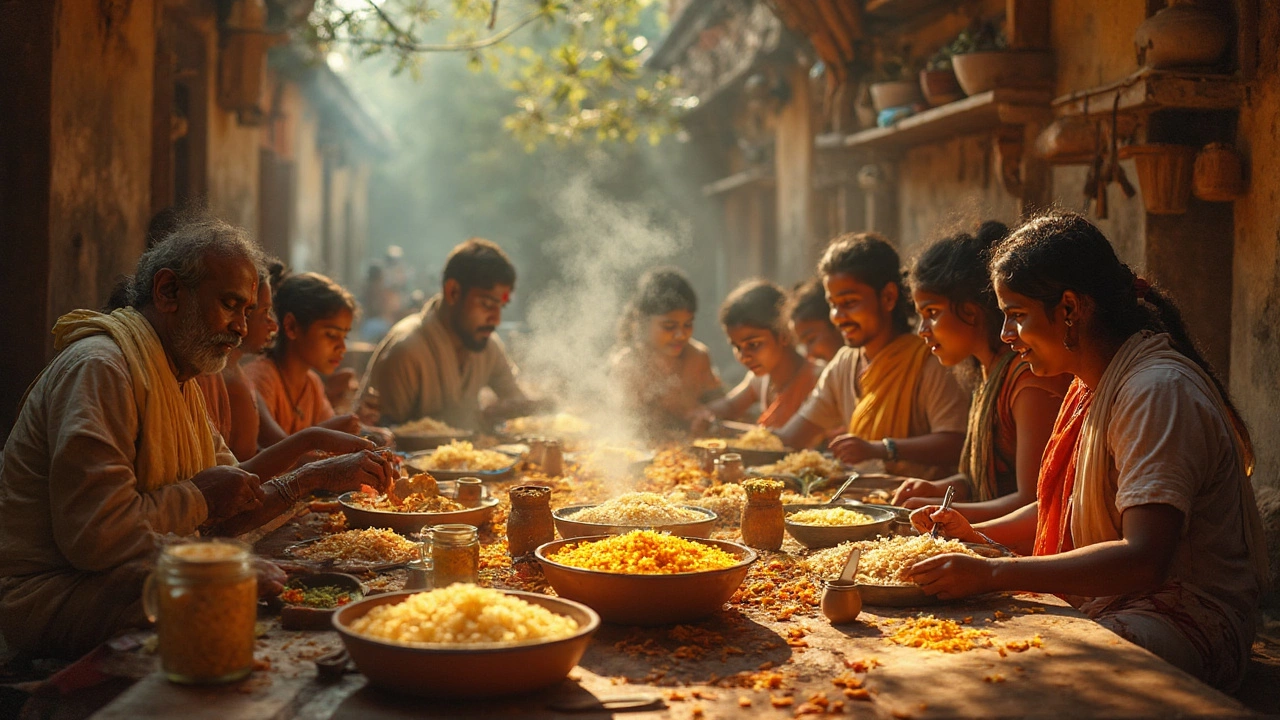
Rice by the Numbers: Fascinating Facts and Practical Tips
Check out these practical facts and figures—showing how universal and crucial rice is:
| Country | Annual Rice Production (2023, million tonnes) |
|---|---|
| China | 211 |
| India | 178 |
| Indonesia | 54 |
| Bangladesh | 54 |
| Vietnam | 44 |
| Thailand | 29 |
| United States | 8 |
So, what tips can you use right at home? When cooking rice, always rinse it before boiling—this washes away extra starch, giving fluffier grains. If you want authentic Asian sticky rice, soak glutinous rice overnight, then steam. For risotto, never rinse—starch is your friend for that creamy texture. Looking for the healthiest option? Brown rice (whole grain) packs more fibre and vitamins, but take note: it takes longer to cook and is chewier than white rice.
Storing rice? Keep uncooked rice in a dry, airtight container—especially in humid places like Birmingham summers, when the air carries extra moisture. Cooked rice should be cooled quickly and stored in the fridge, where it stays good for a couple of days. Leftover rice makes perfect fried rice or can be tossed into soups.
For gardeners inspired by the inventors, growing your own rice is not impossible—it just needs the right space and patience. In temperate climates, varieties bred for short seasons (like those in Italy’s Po Valley) are your best bet. Flood with care: rice likes water, but not endless soaking. Be mindful of space and sunshine, and try starter kits before turning your backyard into a mini-paddy. Who knows? You might join the long line of rice innovators, all the way from the Yangtze to your dinner plate.
If you’re heading out or shopping, remember that the story behind every grain of rice is older than the pyramids, wilder than most legends, and more delicious than half the world’s other inventions. The real invention wasn’t just a crop—it was a whole way of seeing, working, and sharing food, still connecting us today in every mouthful.


